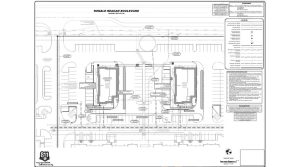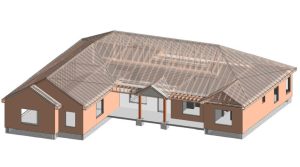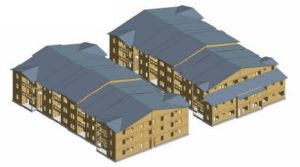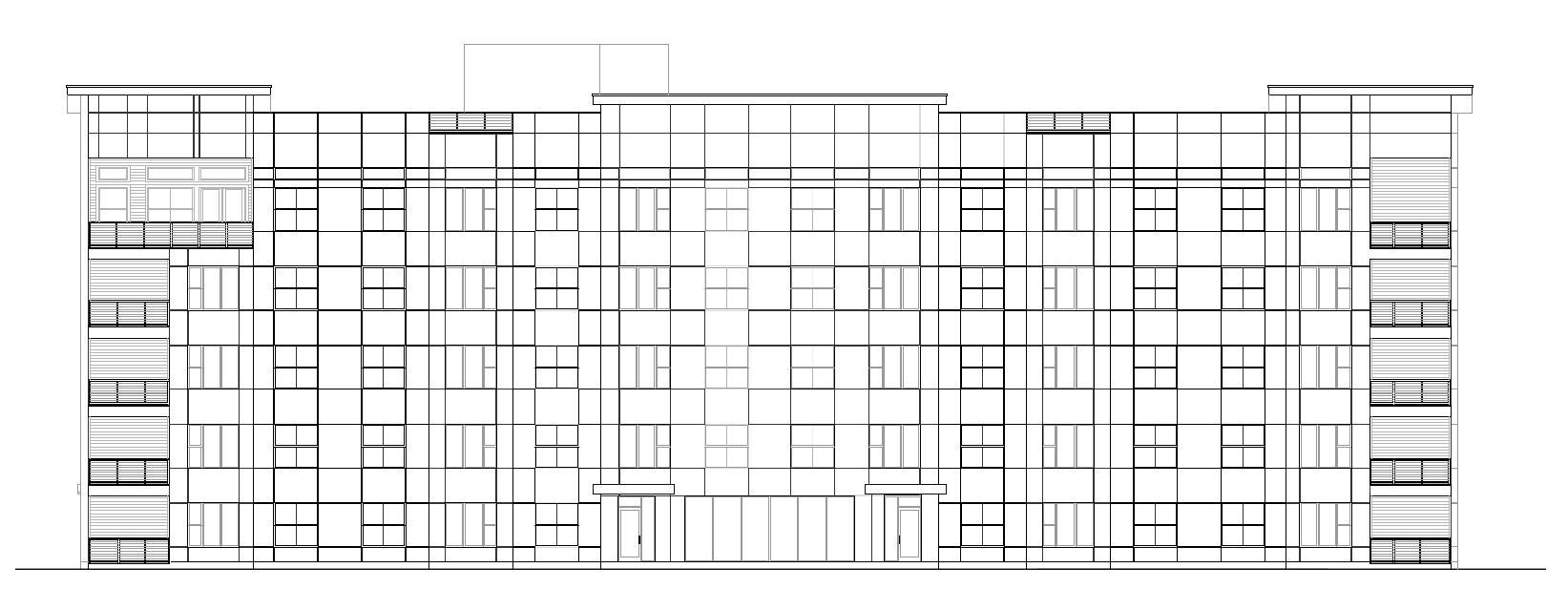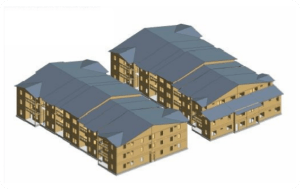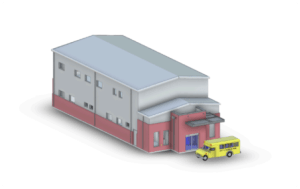Designing for Strength: Understanding Load-Bearing Capacity in Structural Engineering
Structural engineering is a field that deals with the design and analysis of structures that support or resist loads. One of the fundamental principles of this field is load-bearing capacity. The load-bearing capacity of a structure refers to its ability to support the weight or load that is applied to it. This is crucial for ensuring the safety and longevity of any structure. Understanding load-bearing capacity is essential for architects, engineers, and builders. In this blog post, we will explore the concept of load-bearing capacity in structural engineering, why it is important, and how it can influence the design process. Whether you are a student, a professional, or just interested in the topic, this post will provide valuable insights into the world of structural engineering.
1. Introduction to load-bearing capacity in structural engineering
Structural engineering is a discipline that focuses on designing structures that can withstand various types of loads. Load-bearing capacity is a crucial aspect of structural engineering as it determines the ability of a structure to support and resist external forces.
Load-bearing capacity refers to the maximum amount of weight or load that a structure can safely carry without experiencing failure or collapse. This capacity is influenced by numerous factors, including the type of materials used, the structural design, and the intended purpose of the structure.
Understanding load-bearing capacity is essential for structural engineers as it allows them to design structures that can safely support their intended loads. Whether it is a high-rise building, a bridge, or a simple beam, the structural engineer must carefully analyze and calculate the load-bearing capacity to ensure the safety and stability of the structure.
Load-bearing capacity calculations involve considering a range of potential loads, including dead loads (the weight of the structure itself), live loads (such as people, furniture, or vehicles), and environmental loads (such as wind, earthquake, or snow loads). By analyzing these loads and their effects on the structure, engineers can determine the appropriate size and strength of the structural elements, such as columns, beams, and foundations.
Moreover, load-bearing capacity also takes into account factors of safety and serviceability. Safety factors ensure that the structure can withstand unforeseen or accidental loads, while serviceability factors consider the comfort and functionality of the structure under normal operating conditions.
In conclusion, load-bearing capacity is a fundamental concept in structural engineering. It involves understanding and analyzing the forces that act upon a structure, calculating the maximum load it can support, and designing the structural elements accordingly. By considering various loads and factors of safety, structural engineers strive to create strong and durable structures that can withstand the test of time.
2. The importance of understanding load-bearing capacity
Understanding load-bearing capacity is crucial in the field of structural engineering. It forms the foundation for designing safe and structurally sound structures that can withstand the forces they will be subjected to over time. Load-bearing capacity refers to the maximum amount of weight or load that a structure or its components can support without experiencing failure or collapse.
When designing any structure, whether it’s a bridge, a building, or a simple beam, it is essential to have a deep understanding of the load-bearing capacity. This knowledge allows engineers to determine the appropriate materials, dimensions, and structural elements necessary to ensure the safety and longevity of the structure.
The consequences of neglecting load-bearing capacity can be catastrophic. Structures that are not designed to handle the expected loads can experience excessive deflection, deformation, or even complete failure. This can result in property damage, injuries, and in extreme cases, loss of life.
Load-bearing capacity is influenced by various factors, including the type and properties of the materials used, the design and arrangement of structural elements, and the anticipated loads that the structure will be subjected to. It requires a thorough analysis of the specific conditions and requirements of each project, taking into account factors such as dead loads (the weight of the structure itself), live loads (temporary or variable loads), and environmental loads (such as wind, snow, or seismic forces).
Engineers use mathematical models, computer simulations, and empirical data to assess the load-bearing capacity of a structure accurately. This process involves calculating the internal forces and stresses acting on different parts of the structure and comparing them to the capacity of the materials being used.
By understanding load-bearing capacity, engineers can design structures that not only meet safety standards and building codes but also have the potential for longevity and durability. It enables them to make informed decisions, select the most appropriate materials, and optimize the design to ensure the structure can bear the anticipated loads throughout its intended lifespan.
In conclusion, understanding load-bearing capacity is fundamental in structural engineering. It is the cornerstone of designing safe, reliable, and structurally sound structures. By considering the forces at play and analyzing the load-bearing capacity of materials and components, engineers can create designs that can withstand the test of time, ensuring the safety and functionality of the built environment.
3. Types of loads in structural engineering
In the field of structural engineering, understanding the types of loads that a structure may encounter is crucial for ensuring its stability and safety. Loads refer to the forces or external factors that act on a structure, exerting pressure and causing stresses. By categorizing these loads, engineers can effectively design structures that can withstand and distribute the forces they will encounter throughout their lifespan.
There are several types of loads that structural engineers consider during the design process. The first type is dead load, also known as static load, which refers to the weight of the structure itself and any permanent fixtures or components. This includes materials such as concrete, steel, and wood, as well as items like plumbing, electrical systems, and furniture.
Another significant type of load is live load, which accounts for the transient or moving forces that a structure experiences. This can include the weight of people, vehicles, equipment, or any temporary loads that may be placed on the structure. For example, in a bridge design, the live load would encompass the weight of vehicles passing over it.
In addition to dead and live loads, structural engineers also consider environmental loads. These loads are external forces that result from natural phenomena such as wind, snow, earthquakes, or water pressure. Wind loads, for instance, can exert significant pressure on tall structures, while snow loads can accumulate on roofs, adding weight and stress.
Lastly, there are dynamic loads, which are characterized by their varying magnitude and frequency. These loads include vibrations, seismic activity, and impact forces. Dynamic loads can significantly affect a structure’s durability and must be carefully analyzed to ensure its stability under fluctuating conditions.
By comprehensively evaluating these different types of loads, structural engineers can design structures that can safely bear the anticipated forces and provide longevity. Understanding load-bearing capacity is essential for creating structures that not only meet safety standards but also withstand the test of time.
4. Determining design loads and load combinations
When it comes to designing structures that can withstand various forces and loads, understanding how to determine design loads and load combinations is crucial. Design loads refer to the forces that a structure will experience during its lifetime, such as dead loads, live loads, and environmental loads.
Dead loads are permanent loads that are always present, such as the weight of the structure itself, fixed equipment, and materials. Live loads, on the other hand, are temporary loads that can change over time, including the weight of people, furniture, and movable equipment. Environmental loads encompass external forces like wind, snow, seismic activity, and temperature fluctuations.
To determine the appropriate design loads, engineers must consider various factors, including building codes, industry standards, and the specific requirements of the project. These loads are typically calculated using mathematical equations, computer simulations, and empirical data.
Once the design loads are determined, load combinations are applied to account for the simultaneous occurrence of multiple loads. Load combinations consider the different load scenarios that a structure may experience, ensuring that it can withstand the most critical conditions.
Load combinations are typically based on safety factors, which ensure that the structure has a sufficient margin of safety against failure. These factors consider uncertainties in load magnitudes and their simultaneous occurrence, allowing engineers to design structures that can handle unexpected events and variations.
By accurately determining design loads and load combinations, structural engineers can create robust and resilient structures capable of withstanding the expected and unexpected forces they may encounter. This attention to detail and understanding of load-bearing capacity is essential for ensuring the long-term structural integrity and safety of buildings and infrastructure projects.
5. Key factors that affect load-bearing capacity
When it comes to designing structures that can withstand heavy loads, there are several key factors that need to be taken into consideration. Understanding these factors is crucial for ensuring the safety and stability of the structure.
1. Material Strength: The strength of the materials used in construction plays a significant role in determining the load-bearing capacity. Different materials have different strength properties, and engineers need to select materials that can withstand the anticipated loads. For example, steel is known for its high strength-to-weight ratio, making it an excellent choice for heavy-duty structures.
2. Structural Design: The design of the structure itself is another important factor. The arrangement and configuration of load-bearing elements, such as columns, beams, and walls, must be carefully planned to distribute the loads evenly and efficiently. Engineers use various design techniques, such as trusses and arches, to enhance the load-bearing capacity of a structure.
3. Foundation Stability: The stability of the foundation is paramount in ensuring the overall load-bearing capacity. A weak or unstable foundation can compromise the entire structure’s integrity. Engineers must conduct thorough soil analysis and design appropriate foundation systems, such as deep foundations or reinforced concrete footings, to provide adequate support and prevent settlement or failure.
4. External Forces: Structures are subjected to various external forces, such as wind, seismic activity, and live loads. These forces can exert additional stress on the structure and affect its load-bearing capacity. Engineers must consider the anticipated external forces during the design phase and incorporate appropriate safety factors to account for these loads.
5. Maintenance and Durability: Regular maintenance and ensuring the durability of the structure are essential for maintaining its load-bearing capacity over time. Factors such as corrosion, deterioration, and wear and tear can weaken the structure and reduce its ability to bear loads. Regular inspections, repairs, and the use of durable materials are key to preserving the load-bearing capacity in the long term.
By carefully considering these key factors, structural engineers can design robust and resilient structures that can safely bear the intended loads. Understanding load-bearing capacity is fundamental in ensuring the structural integrity and longevity of any construction project.
6. Materials used in load-bearing structures
When it comes to designing load-bearing structures, the selection of materials plays a crucial role in ensuring the strength and durability of the final product. Structural engineers must carefully consider various factors such as the type of load the structure will bear, environmental conditions, and the desired lifespan of the structure.
Common materials used in load-bearing structures include steel, concrete, and timber. Each material has its own unique properties and advantages that make it suitable for specific applications.
Steel is known for its exceptional strength-to-weight ratio, making it an ideal choice for structures that require high load-bearing capacity and flexibility. It is commonly used in the construction of bridges, high-rise buildings, and industrial facilities. Steel structures offer excellent resistance to weather conditions and can be easily fabricated and erected on-site.
Concrete, on the other hand, is renowned for its compressive strength and ability to withstand heavy loads. It is commonly used in the construction of foundations, columns, and beams. Reinforced concrete, which consists of steel bars embedded within the concrete, provides enhanced tensile strength and helps prevent cracking under stress. Concrete structures are known for their long-lasting durability and fire resistance.
Timber, although not as commonly used as steel or concrete, has been utilized in load-bearing structures for centuries. It is a renewable resource and offers natural aesthetic appeal. Timber structures are lightweight, easy to work with, and have excellent thermal insulation properties. However, timber requires regular maintenance and may be susceptible to rot, pests, and fire. Proper treatment and design considerations are essential to ensure its long-term performance.
In addition to these traditional materials, advancements in technology have introduced new options such as composite materials and engineered wood products. These materials offer unique combinations of strength, durability, and sustainability. They are often used in specialized applications where specific performance requirements need to be met.
Ultimately, the choice of materials in load-bearing structures should be based on a thorough understanding of the project requirements, considering factors such as load types, environmental conditions, cost-effectiveness, and sustainability. By carefully selecting and incorporating the appropriate materials, structural engineers can create robust and resilient structures that stand the test of time.
7. Structural analysis methods and tools
Structural analysis methods and tools play a crucial role in understanding and determining the load-bearing capacity of a structure. Engineers utilize these methods and tools to assess the structural integrity, stability, and safety of a building or infrastructure project.
One commonly used method is finite element analysis (FEA), which breaks down complex structures into smaller, manageable elements. By applying mathematical equations and algorithms, FEA simulates the behavior of these elements under various loads and conditions. This enables engineers to analyze stress and strain distribution, predict potential failure points, and optimize the design to enhance its load-bearing capacity.
Another widely employed tool is computer-aided design (CAD) software. CAD programs enable engineers to create detailed 3D models of structures, including all the components and connections. These models can then be subjected to virtual tests and simulations, allowing engineers to observe the response of the structure to different loads and environmental factors. CAD tools also facilitate the visualization of complex structural elements, aiding in better design decisions and communication between stakeholders.
Other structural analysis methods include mathematical modeling, which involves formulating equations based on physical laws to predict the behavior of a structure under various conditions. These models can be further refined using experimental data from real-world testing.
It’s worth noting that structural analysis methods and tools are constantly evolving, with advancements in technology enabling more accurate and efficient analysis. For instance, the use of artificial intelligence and machine learning algorithms is revolutionizing structural analysis by automating processes, analyzing vast amounts of data, and providing valuable insights for optimizing load-bearing capacity.
In conclusion, structural analysis methods and tools are essential in the field of engineering to ensure the strength and safety of structures. By employing these techniques, engineers can accurately assess the load-bearing capacity of a structure, identify potential weak points, and make informed design decisions that result in sturdy and reliable buildings and infrastructure.
8. Design considerations for load-bearing structures
When it comes to designing load-bearing structures, there are several important considerations that need to be taken into account. These considerations are crucial in ensuring the safety and stability of the structure, as well as its overall load-bearing capacity.
One of the primary factors to consider is the material used in construction. Different materials have varying load-bearing capabilities, and it is essential to choose one that can withstand the expected loads and stresses. For example, steel is known for its high strength and durability, making it a popular choice for heavy-duty structural applications, while timber may be more suitable for lighter loads.
Another aspect to consider is the shape and configuration of the structure. The design should be optimized to distribute the loads evenly across the different members and components. This can be achieved through techniques such as truss systems, arches, and reinforced concrete frames, which help to effectively transfer and distribute the loads throughout the structure.
Additionally, the placement and arrangement of load-bearing elements, such as beams, columns, and walls, should be carefully planned. These elements should be strategically positioned to provide maximum support and resistance to the anticipated loads. The size and dimensions of these elements also play a critical role in determining their load-bearing capacity.
Furthermore, the anticipated loads and stresses that the structure will be subjected to must be thoroughly analyzed and calculated. This involves considering factors such as dead loads (the weight of the structure itself), live loads (the weight of occupants and movable objects), wind loads, seismic loads, and other external forces. By accurately assessing these loads, engineers can determine the required strength and capacity of the structure.
Lastly, it is crucial to consider any potential future modifications or changes in usage that the structure may undergo. Designing with flexibility in mind allows for adaptability and ensures that the structure can accommodate any potential alterations or additions without compromising its load-bearing capacity.
In conclusion, designing load-bearing structures requires a comprehensive understanding of various factors such as material selection, structural configuration, element placement, load analysis, and future considerations. By carefully considering these design aspects, engineers can create robust and safe structures capable of withstanding the intended loads and ensuring the longevity and stability of the construction.
9. Testing and evaluating load-bearing capacity
When it comes to designing structures with a focus on strength and safety, testing and evaluating the load-bearing capacity is absolutely crucial. This step ensures that the structure can withstand the anticipated loads and forces it will encounter over its lifespan.
Load testing involves subjecting the structure to various loads, such as static, dynamic, or even extreme conditions, to assess its strength and performance. This process helps to identify any weaknesses or vulnerabilities in the design and allows for necessary adjustments to be made before construction begins.
There are different methods and techniques used for load testing, depending on the type of structure and its intended use. For example, in bridge construction, load testing may involve applying heavy weights or using hydraulic jacks to simulate the weight of vehicles and pedestrians. In building construction, load testing could include applying simulated loads to floors, walls, or roofs to assess their capacity to bear weight.
Furthermore, advanced technologies such as computer simulations and finite element analysis (FEA) are often employed to model and predict how a structure will behave under different load conditions. These tools provide valuable insights into the structural integrity, allowing engineers to optimize the design and ensure that it meets the required safety standards.
Load testing and evaluation go hand in hand with structural engineering, as they provide essential data and evidence to validate the design’s strength and reliability. By conducting thorough and rigorous load tests, engineers can have confidence in the structural integrity of their designs, ensuring the safety of those who will utilize the structure.
In conclusion, testing and evaluating the load-bearing capacity is a critical step in the process of designing strong and durable structures. By subjecting the design to various load scenarios and utilizing advanced technologies, engineers can ensure that their designs meet safety standards and provide long-lasting performance.
10. Case study: Successful load-bearing capacity design in a real-world project
In order to fully grasp the importance of load-bearing capacity design in structural engineering, it is crucial to examine a real-world case study where this concept was successfully implemented. This case study showcases the practical application of load-bearing capacity design principles and highlights the positive impact it can have on the structural integrity and overall success of a project.
The project in question was the construction of a multi-story commercial building in a bustling city center. The design team faced numerous challenges, including limited space, strict building codes, and the need to accommodate a variety of businesses within the structure. However, they were determined to create a safe and efficient building that could withstand the demands placed upon it.
During the initial stages of the project, extensive research and analysis were conducted to determine the anticipated loads that the structure would experience. This included considering factors such as the weight of the building materials, expected occupancy loads, and potential environmental loads like wind and snow. By accurately assessing these loads, the design team could establish the necessary load-bearing capacity for each component of the structure.
To ensure the success of the project, the design team employed advanced computer simulations and modeling techniques. This allowed them to visualize and analyze the behavior of the structure under different load scenarios, enabling them to make informed decisions regarding material selection, structural reinforcements, and overall design modifications.
One of the key factors that contributed to the success of the load-bearing capacity design was the collaboration between the structural engineers and the architects. By working closely together, they were able to seamlessly integrate the load-bearing elements into the overall aesthetic and functional design of the building. This not only enhanced the structural integrity but also created a visually appealing and cohesive architectural vision.
Throughout the construction process, rigorous quality control measures were implemented to verify that the load-bearing elements were installed and executed according to the design specifications. Regular inspections, material testing, and structural analysis were conducted to ensure that the load-bearing capacity was maintained at all times.
The successful completion of this project stands as a testament to the importance of load-bearing capacity design in structural engineering. By thoroughly understanding the anticipated loads and meticulously designing and implementing the necessary load-bearing elements, the design team was able to create a durable and resilient structure that exceeded expectations. This case study serves as a valuable example for future projects, emphasizing the significance of prioritizing load-bearing capacity in structural design.
11. Conclusion: Designing for strength and safety in structural engineering
In conclusion, designing for strength and safety is paramount in the field of structural engineering. From towering skyscrapers to intricate bridge designs, understanding load-bearing capacity is crucial to ensure the longevity and stability of structures.
By carefully analyzing the forces and loads that a structure will experience, engineers can determine the appropriate materials, dimensions, and construction techniques to withstand these pressures. This includes considering factors such as live loads, dead loads, wind loads, seismic loads, and more.
Furthermore, incorporating safety measures and contingency plans is essential to protect against unforeseen circumstances or emergencies. Engineers must account for potential environmental factors, structural deterioration over time, and the possibility of unforeseen events like earthquakes or extreme weather conditions.
By adhering to stringent building codes, regulations, and industry standards, structural engineers can create designs that not only meet the required load-bearing capacity but also prioritize the safety and well-being of occupants and the surrounding environment.
In summary, designing for strength and safety in structural engineering requires a comprehensive understanding of load-bearing capacity, meticulous planning, and adherence to strict guidelines. By prioritizing these factors, engineers can create structures that stand the test of time and contribute to a safer built environment for generations to come.
We hope you found our blog post on understanding load-bearing capacity in structural engineering informative and insightful. Designing for strength is crucial in ensuring the safety and longevity of any structure. By gaining a deeper understanding of load-bearing capacity, engineers can make informed decisions that will not only optimize the structural integrity but also meet the specific needs of the project. Remember, a strong foundation is key to constructing a sturdy and reliable structure. Thank you for reading, and we wish you success in your future engineering endeavors!












